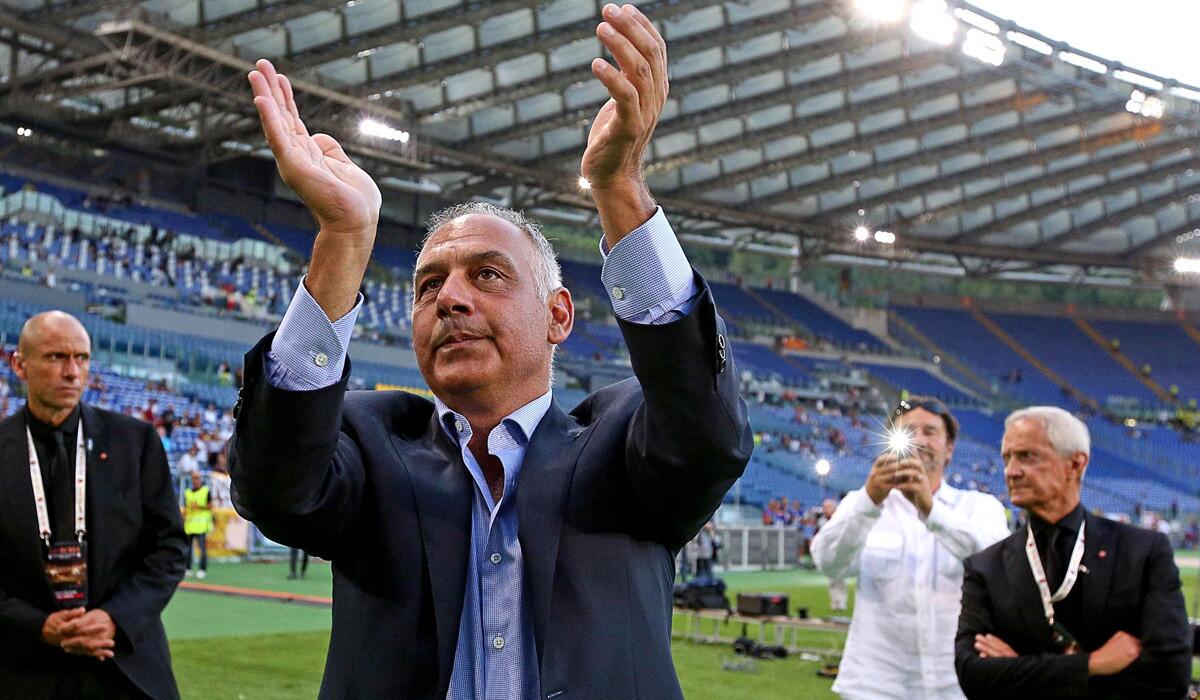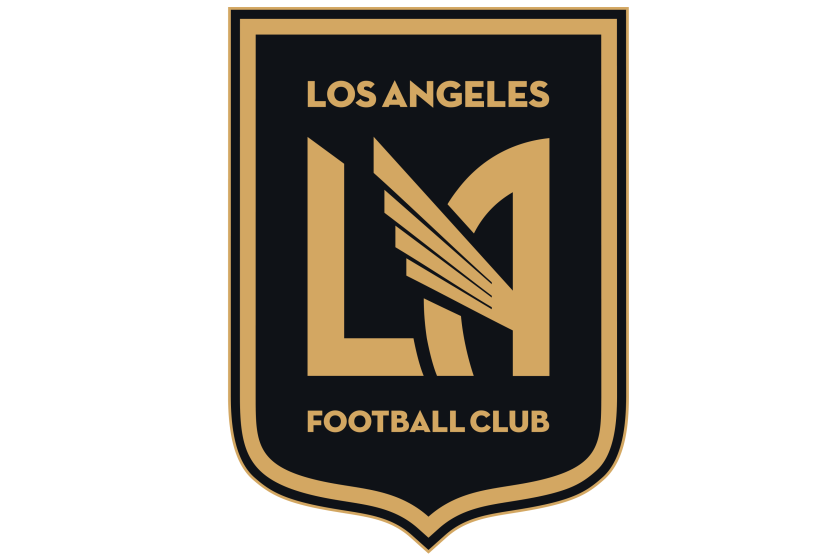Italy’s Serie A tries to get higher grades

- Share via
By most measures, last season was the best in AS Roma’s long history, with the team winning a franchise-best 26 games and amassing a club-high 85 points.
What it didn’t win, however, was Italy’s Serie A championship. Because while Roma was rewriting the team record book, Juventus was making league history, winning 33 of 38 games and cruising to its third consecutive title.
And therein lies the lesson Roma took into the new season, which it opened Saturday with a 2-0 win over Fiorentina.
“This is a very difficult league,” says Italo Zanzi, the team’s CEO. “As we found out last year, there’s very little room for error. Every point is like gold. A team can lose the championship because they tied a game in October instead of winning it.”
If the competition at the top has grown tighter, though, Serie A itself has slipped further behind the rest of continent. According to sports business group Deloitte, the league revenues outpaced only France’s Ligue 1 among Europe’s top soccer leagues in 2012-13, the last season for which statistics are available. Serie A was also fourth in average attendance at 23,365 a game and, perhaps most painful of all, UEFA’s complicated “coefficient rankings” — a mathematical formula that rates leagues based on their performances in the five previous Champions League and Europa League tournaments — lists Serie A fifth in Europe behind even Portugal.
Those are all trends Zanzi says the league must reverse.
“Outside of Italy I think the Serie A has a tremendous opportunity to grow and to regain some of [the] prominence that it lost, probably, over the last decade,” said Zanzi, a 40-year-old New Yorker. “And there’s a lot of different things it has to do to do that.”
In 2012-13 Serie A drew 59% of its income from broadcasting, according to Deloitte. Zanzi says it must do better, especially outside of Italy.
“The league, thankfully, was able to negotiate very favorable domestic television packages. Now we’re entering the international part of that cycle,” said Zanzi, a former college soccer player who won a bronze medal in team handball at the 2003 Pan American Games and worked in broadcasting sales and marketing for Major League Baseball before joining Roma. “And we, at Roma, have tried to be leaders in imploring our colleagues to focus on international television as …[a] fundamental driver of fan affinity, club support and revenue outside of Italy.
“We recognize it as being paramount to the growth of the league.”
Serie A games are currently broadcast in the U.S. on cable network beIN Sports. But the league has contracted with the Swiss marketing firm Infront to negotiate new global TV deals before next season. At the same time, analysts say Italian clubs must also increase the revenues they get from merchandise, sponsorships and attendance.
Roma is trying to take the lead there as well, announcing plans earlier this month for a new privately financed $300-million stadium that Zanzi says will replace the aging 77-year-old Stadio Olimpico and change the fan experience at Roma games when it opens in 2016. (Before last May’s Italian Cup final, a Roma fan fired four shots at a Napoli supporter, striking him in the chest. The victim died from his wounds in a Rome hospital a month later.)
“Unfortunately, while Serie A has had a great product on the pitch, the stadium experience for fans has really been not optimal — and in some cases unsafe,” he said. “We believe that if other clubs were to dedicate time and resources to that part of the overall soccer industry they would be able to generate more revenue, bring more fan engagement, be in a financially better place and lift up the overall competition level and the competitiveness of the league.”
One area where Serie A has had success is in keeping its top players at home. When Mario Balotelli left Milan for Liverpool last week he became only the fifth member of Italy’s World Cup team to play abroad. Compare that with France, which has 16 members of its national team playing outside Ligue 1.
That can be a double-edged sword, though, because while it creates a draw for fans in Italy, it limits the international exposure for the country’s biggest stars. That’s a problem some teams have tried to solve with high-profile summer tours — four Italian teams have played in the first two editions of the U.S.-based International Champions Cup — and through a mushrooming digital media presence.
It will take a similar cooperative effort to get Italian soccer back to the level of success it enjoyed between 1989 and ‘99, when Serie A was widely considered the world’s best league, with teams reaching the Champions League final nine times in 10 years.
“We are seeing some [new] ownership coming into the Italian league, which is a very positive thing,” said Zanzi, whose boss, Boston businessman Jim Pallotta, was part of the first foreign investment group to buy a Serie A team when it took control of Roma in 2011. “It’s indicative of new owners believing in the future of Italian football. Also it brings, frankly, people with some ideas, new visions and other relationships.
“We have to support each other. And there are so many issues that are really bigger than one club ... whether it’s stadiums, whether it’s battling racism and security problems, whether it’s developing media platforms. These are things we have to work together on. Otherwise, there’s no way we can be as successful as we should be.”
Twitter: @kbaxter11
More to Read
Go beyond the scoreboard
Get the latest on L.A.'s teams in the daily Sports Report newsletter.
You may occasionally receive promotional content from the Los Angeles Times.








